Gas And Seismic Activity High At Erupting Hawaii Volcano
Gas and seismic activity at the Kilauea volcano in Hawaii remain high despite the lava flow appearing to calm as seen in this new video.
The footage shows an overflight of the summit of Kilauea and it was shared online by the United States Geological Survey (USGS) yesterday (Monday 18th October) after having been shot on 15th October.
Speaking about the new footage, the USGS said: "A morning overflight of Kilauea summit on October 15, 2021, provided aerial views of the eruption within Halema‘uma‘u. Lava erupts from a single vent on the western wall of the crater. The vent has a spatter cone around it, with an opening to the east from which lava flows into the lava lake."
While the lava activity seems to be more subdued than in previous updates, the USGS did point out that gas and seismic activity remain high at the summit.
They said in a statement on their website that "earthquake hazards occur regularly in Hawaii" and that "frequent and long-lasting eruptions and recurrent strong earthquakes in Hawai‘i create a unique combination of natural hazards for people across the Hawaiian Islands."
They also said that the volcano was known to be a source of "large explosive eruptions", adding: "Many strong explosive eruptions have occurred at Kilauea Volcano during the past 2,500 years. According to current understanding of eruption history, the volcano has alternated between centuries-long periods of dominantly effusive (lava flow) and dominantly explosive eruptions."
Volcanic activity resumed on Wednesday afternoon (29th September) for the first time in almost a year.
Kilauea is one of the most active volcanoes on Earth, according to the USGS, and in a statement they said this eruption started some four months since the last eruption came to an end in May.
Hawaiʻi, not to be confused with the name of the state, is the official name of the largest island in the archipelago, which is often also called Big Island.
Hawaii, the only US state that is not in North America, is made up of 137 volcanic islands.
Kilauea is a highly active shield volcano that is believed to be between 210,000 and 280,000 years old, it emerged from the sea about 100,000 years ago.
Its last major eruption took place between May and September 2018 and led to thousands of local residents being displaced and the destruction of 716 homes.
The eruption in 2018 saw lava oozing from 24 different vents with one major explosion sending debris flying 30,000 feet (9,100 metres) into the sky.
USGS,NPS, J.Wei/NF/Joe Golder
-
 3:25
3:25
ViralHog
6 years ago $0.40 earnedBooming Volcanic Eruptions On Hawaii's Big Island
90 -
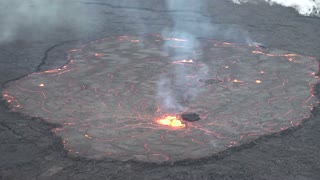 0:56
0:56
Fourthestate
1 year agoHAWAII LIVE-OH: Volcano's Otherworldly Red-Hot Lava Eruption
20 -
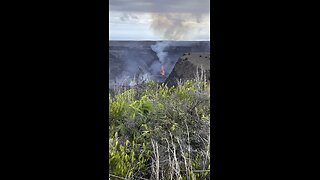 0:31
0:31
Eluder_Racing
4 months agoHawaii Big Island volcano Eruption
3 -
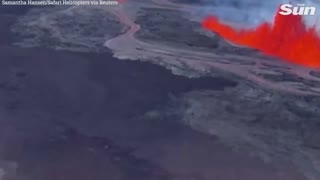 2:21
2:21
Last World News Channel
1 year agoWorld's largest volcano violently erupts in Hawaii as helicopter flies over
5 -
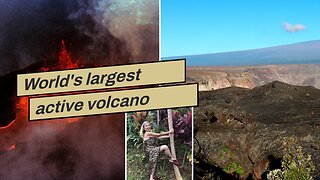 1:46
1:46
Just the News Articles
1 year agoWorld's largest active volcano erupts on Hawaii's Big Island
32 -
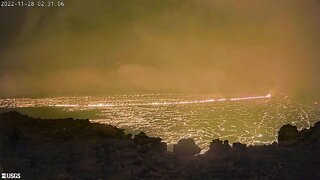 3:48
3:48
aminenezzar
1 year agoHawaii’s Mauna Loa, world’s largest active volcano, starts to erupt for first time in nearly four
6 -
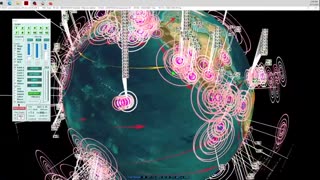 20:27
20:27
SierraDelta
8 months agoLarge eruption at Kilauea Volcano in Hawaii -- Fissures and lava flows -- Unrest hit. DutchSinse 9-1
2.68K8 -
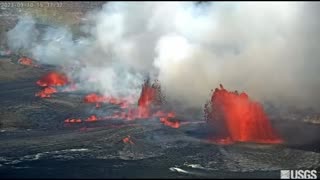 0:12
0:12
galacticstorm
8 months ago💥🔥 Kilauea volcano in Hawaii is erupting - USGS
196 -
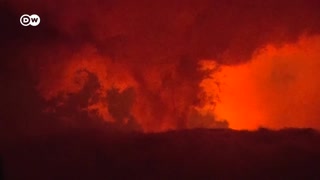 1:33
1:33
Last World News Channel
1 year agoMauna Loa, world's largest active volcano, erupts for the first time in 38 years
3 -
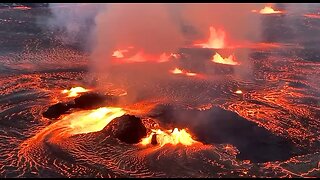 0:13
0:13
VirtueNews
1 year agoHawaii volcano erupts again
15